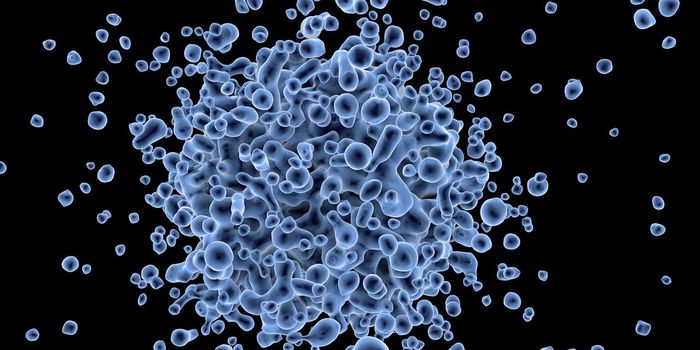How Belly Fat Increases Risk for Cancer
It’s no secret that obesity is a risk factor for several health conditions, including cancer. But specific to cancer, researchers knew of the link, but they didn’t know exactly how fat promotes cancer growth. Now, researchers from Michigan State University say they a specific type of belly fat is responsible for turning healthy cells into cancerous ones.
"While there have been several advances in treating cancer and improving the quality of life of patients, the number of new cases continues to surge," said Jamie Bernard, lead author and an assistant professor in pharmacology and toxicology. "It's important to understand the cause so we can do a better job at reducing the number of cancer cases using dietary modifications or therapeutic interventions."
Bernard and colleagues investigated the link between body fat and cancer in a mouse model of obesity. These mice were fed a high-fat diet to simulate obesity seen in humans. In these mice, as in humans, the team could discern two layers of fat: the top layer, also known as subcutaneous fat that’s directly under the skin; and an internal layer, also known as visceral fat or visceral fat. Of the two types of fat, belly fat is by far more dangerous to our health. This type of fat extends deep inside the body and envelopes vital organs like the heart, stomach, liver, and pancreas. The proximity and abundance of the fat increases the conversion of fat into cholesterol that can leech into the bloodstream and cause plaque buildups in the arteries. This is why belly fat is associated with high risk for coronary artery disease and cardiovascular disease. Belly fat also contributes to a multitude of other health problems, such as Type 2 diabetes and cancer.
In the obese mice, Bernard’s team found visceral fat cells produced higher amounts of the fibroblast growth factor-2 (FGF2) protein, as compared to fat cells in the subcutaneous layer. This protein seemed to promote the conversion of non-cancerous to cancerous cells. Those cells that were already vulnerable to the protein seemed most susceptible turning into tumor cells.
Bernard then sampled human visceral fat tissues taken from women who were undergoing hysterectomies. They found that when the fat had higher amounts of FGF-2 secretions, the cells were more likely to turn cancerous when injected into mice. "This would indicate that fat from both mice and humans can make a non-tumorigenic cell malignantly transform into a tumorigenic cell," Bernard said.
These results concur with previous studies, which argued that the location of the fat matters in cancer development. In one such study, researchers found that people who had an increase of 11 centimeters at the waist are 13 percent more likely to get obesity-related cancers.
"Our study suggests that body mass index, or BMI, may not be the best indicator," Bernard said. "It's abdominal obesity, and even more specifically, levels of a protein called fibroblast growth factor-2 that may be a better indicator of the risk of cells becoming cancerous."
Of course belly fat is not the only contributing factor to obesity-related cancers. Moreover, having belly fat does not mean a person will, in fact, develop cancer. "There's always an element of chance in whether a person will get cancer or not," said Bernard. "But by making smarter choices when it comes to diet and exercise and avoiding harmful habits like smoking, people can always help skew the odds in their favor."
Additional sources: Michigan State University









